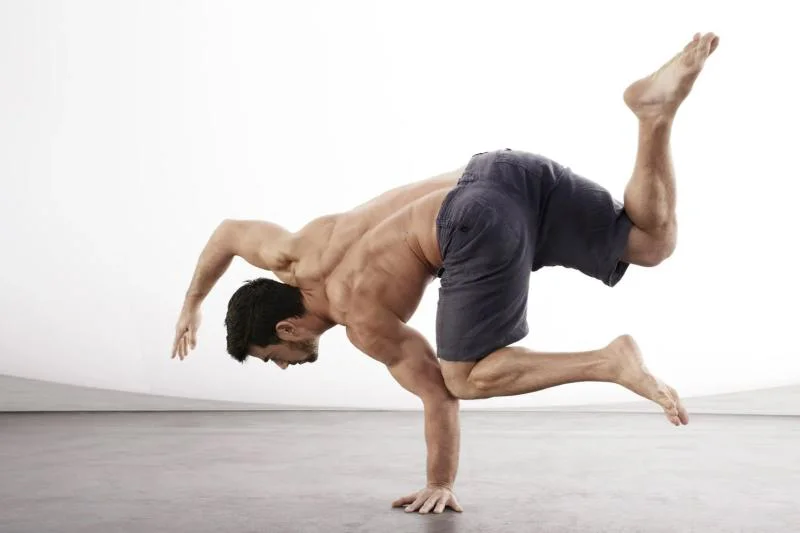Bodyweight exercises and weightlifting are both forms of resistance training, but they rely on different sources and offer different benefits. As the name implies, bodyweight exercises utilize the body’s weight as resistance. These include, among others, push-ups, pull-ups, lunges, and planks. Generally speaking, bodyweight exercises are simple to learn, require no apparatus, and can be performed anywhere. They improve balance, flexibility, and functional fitness, making daily activities easier. These exercises target multiple muscle groups concurrently, fostering overall body strength.
In contrast, resistance in weightlifting is provided by external weights such as barbells, dumbbells, or weight machines. Weightlifting enables greater and more precise control over resistance, facilitating targeted strength gains and muscle growth in particular areas. Progressive accumulation facilitates quicker gains in muscle mass and strength during weightlifting. However, access to a gym or residential fitness equipment is typically required. In conclusion, while bodyweight exercises offer convenience and total-body conditioning, weightlifting provides more targeted improvements in strength and muscle growth. The optimal option depends on a person’s fitness objectives, resources, and preferences. Combining the two can provide comprehensive benefits for strength and conditioning.
What are Bodyweight Exercises?
Bodyweight exercises are strength training in which you use your body weight as resistance instead of weights or other tools. The goal is to use your body weight to create resistance, strain, and effort that your muscles will have to work against. Bodyweight workouts include, among other things, squats, push-ups, pull-ups, lunges, burpees, planks, and yoga poses. These exercises are great because you can do them anywhere, anytime, and you don’t need special tools. This makes them very accessible and useful.
Bodyweight exercises also work multiple muscle groups at once, often coordinated, improving functional fitness, balance, and flexibility. These exercises can help you get stronger generally, have more stamina, change your body’s appearance, and even improve your heart health. Bodyweight exercises can also be altered to fit people of all fitness levels, making them suitable for new and experienced exercisers. For example, a push-up can be made easier by doing it against a wall, or it can be made more complicated by clapping or raising the feet. Even though bodyweight workouts are simple, they can be very effective with the proper form and over time. They are essential parts of many exercise routines around the world.
What is Weightlifting?
Weightlifting is a type of exercise that requires lifting external weights like dumbbells, barbells, or weight machines. It is also called resistance training or strength training. The goal is to increase muscle strength, size, power, and endurance by putting stress on the muscles, which causes them to adjust and grow stronger and/or bigger. In weightlifting, the amount of resistance your muscles work against can be changed. This is called “progressive overload,” meaning the resistance can be slowly raised over time. This concept, essential for building muscle and getting stronger, says that the musculoskeletal system needs to be challenged increasingly to keep building muscle.
Weightlifting routines often focus on specific muscle groups, which makes it possible to train in a targeted way. For example, arm curls focus on the biceps, while squats are primarily on the lower body. To be safe and effective, weightlifting needs a certain amount of technique. If your form is wrong, you could hurt yourself. So, pros or experienced lifters can help people who are just starting. Weightlifting helps your muscles, but it also makes your bones stronger, improves your balance, helps you lose weight, makes you better at other sports, and improves your mental health. It’s an essential part of exercise plans for athletes and regular people.
Difference Between Bodyweight Exercises and Weightlifting
Bodyweight exercises are those in which the participant uses only their body weight as resistance and have been shown to improve stability, mobility, and overall health and fitness. They target numerous muscle groups simultaneously, have a low equipment threshold, and have a wide range of use. On the other hand, weightlifting uses external weights such as dumbbells or weight machines. You can fine-tune the amount of resistance you’re using, leading to more efficient muscle growth and faster strength improvements. However, this typically necessitates using specialized apparatus or a gym setting. Concerning convenience and general fitness, bodyweight exercises win out over weightlifting every time. Both can be used together to provide a complete physical training program. Below, we’ve laid out the primary differences between bodyweight training and weightlifting.
Source of Resistance
In contrast to weightlifting, which typically uses external weights like dumbbells, barbells, or weight machines, bodyweight exercises rely on the individual’s body weight as resistance.
Equipment Required
You can do bodyweight exercises anywhere with nothing more than your body. When lifting weights, however, you’ll likely need some specialized gear and maybe even a gym to do it in.
Muscle Engagement
Many bodyweight exercises simultaneously target numerous muscular groups, increasing strength and stability. With weightlifting, you may isolate and work specific muscle groups.
Progression
Bodyweight exercises can be advanced by performing more repetitions, performing different forms, or using other leverages. Increasing the amount of weight you lift is a common way to advance in weightlifting.
Skill Level
Compared to weightlifting, which requires more technical expertise to maintain perfect technique and prevent injury, bodyweight exercises are typically more straightforward for novices to learn and do safely.
Functional Fitness
Bodyweight exercises that mirror natural motions can improve functional fitness and agility. The strength gained through weightlifting may not always be readily transferable to more practical tasks.
Strength Gains and Hypertrophy
Gains in muscle mass and strength from weightlifting are often more rapid than those from bodyweight exercises because of the progressive overload that occurs during weightlifting.
Flexibility and Balance
Contrasted with weightlifting, which primarily targets muscular strength and power, bodyweight exercises emphasize stability and mobility.







